
Simon Albrecht
About the Author
Simon Albrecht didn’t grow up with American coins in his pocket—but somewhere between a dusty flea market in Dresden and a US 1944 Lincoln Wheat one cent penny silver plated copy coin in surprising condition, a lifelong obsession was born.
Based in Leipzig, Simon is Germany’s leading voice on Lincoln Wheat penny rare coin collecting.
Albrecht brings a European perspective to an American classic. He’s the author of “Wheat & Worth: Does a Rare Lincoln Wheat Penny Value Billion Exist?” and a regular contributor to Coin ID Scanner and Numismatik Aktuell.
Simon’s collection includes:
- A 1909-S VDB in AU-58
- A full set of 1943 steel cents with errors
Connect with Simon:



The $2.3 Million Mystery: Lincoln Wheat Penny Values Decoded
Historical Significance: 1st US Coin Featuring a Real Person (1909)
When the U.S. Mint released the Lincoln Wheat Cent in 1909, it broke with over a century of tradition.
- It became the first U.S. coin to feature a real person, replacing classical allegories with the unmistakable face of Abraham Lincoln.
- Designed by Victor David Brenner, it debuted on the centennial of Lincoln’s birth.
- Its reverse—a pair of wheat ears—was a symbol of prosperity and growth, but the real story was on the obverse: a bold shift in how America honored its heroes.
The initials “V.D.B.” on the reverse caused controversy and were removed shortly after, creating an instant rarity in the 1909-S VDB—a coin that collectors still chase today, as it’s a valuable Lincoln Wheat penny.
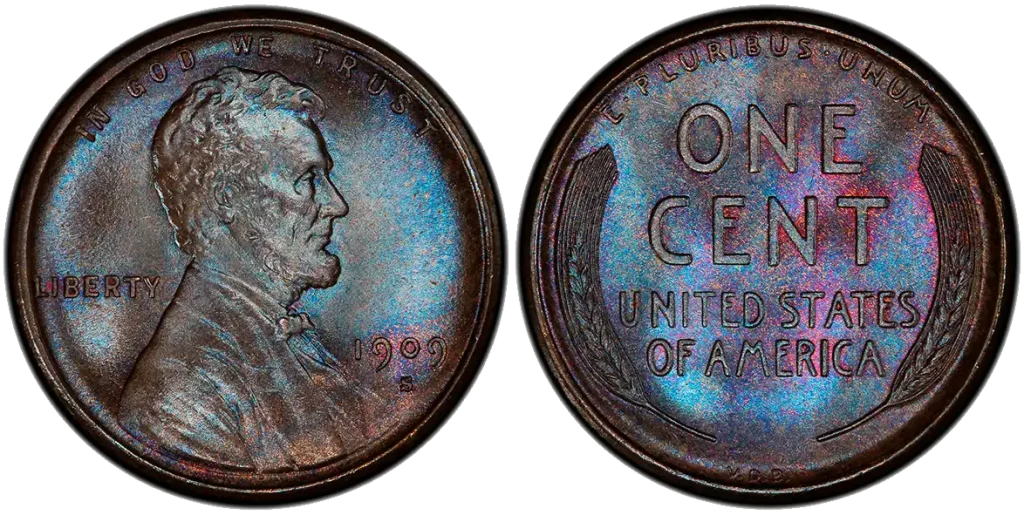
Why Do Some Lincoln Pennies Sell for Millions?
Not all these coins are created equal. While most are worth just a few cents, a select few may be in a Lincoln Wheat penny $177 million valuation list. Here’s what sets them apart:
1. Rarity
- The 1909-S VDB, with just 484,000 minted, is the holy grail of early Lincoln cents.
- Low-mintage dates like the 1931-S and 1914-D also hold strong collector appeal.
2. Mint Errors
- The 1943 Bronze Cent. During WWII, pennies were supposed to be made from steel to conserve copper. But a few bronze planchets slipped through the presses. One sold for $2.3 million—making it the most valuable Lincoln cent ever.
- The 1955 Doubled Die Obverse, with its eerie, doubled inscriptions, remains one of the most iconic U.S. coin errors.
- The 1922 “No D” error, where Denver-minted coins lost their mint mark due to worn dies, is a fascinating rarity that commands thousands.
3. Composition Counts
- Most pennies are copper. But the 1943 Steel Cent, coated in zinc, stands out with its silvery color—valuable in high grade.
- Even more valuable: the accidental 1944 Steel Cent, struck on leftover wartime planchets when production had returned to copper. These are ultra-rare anomalies.
Top 10 Most Valuable Lincoln Wheat Pennies Ever Sold
| Rank | Year | Mint Mark | Variety / Feature | Grade | Sale Price | Auction House & Year |
| 1 | 1943 | D | Bronze Planchet | PCGS MS64BN | $1,700,000 | Legend Rare Coin Auctions, 2010 |
| 2 | 1943 | — (Phila.) | Bronze Planchet | PCGS MS63BN | $840,000 | Stack’s Bowers, 2021 |
| 3 | 1944 | S | Steel Planchet | PCGS MS66 | $408,000 | Heritage Auctions, 2021 |
| 4 | 1909 | S VDB | First Year, Low Mintage | PCGS MS67RD | $258,500 | Stack’s Bowers, 2014 |
| 5 | 1944 | — (Phila.) | Steel Planchet | NGC MS64 | $180,000 | Heritage Auctions, 2021 |
| 6 | 1922 | No D | Strong Reverse Variety | PCGS MS64BN | $74,750 | Heritage Auctions, 2008 |
| 7 | 1955 | — | Doubled Die Obverse | PCGS MS65+RD | $50,300 | Heritage Auctions, 2018 |
| 8 | 1914 | D | Key Date | PCGS MS66+RD | $29,375 | Heritage Auctions, 2018 |
| 9 | 1931 | S | Depression-Era Low Mintage | PCGS MS66RD | $18,600 | Heritage Auctions, 2004 |
| 10 | 1909 | S | No VDB | PCGS MS67RD | $16,100 | Heritage Auctions, 2006 |
1. 1943-D Bronze Cent — $1,700,000
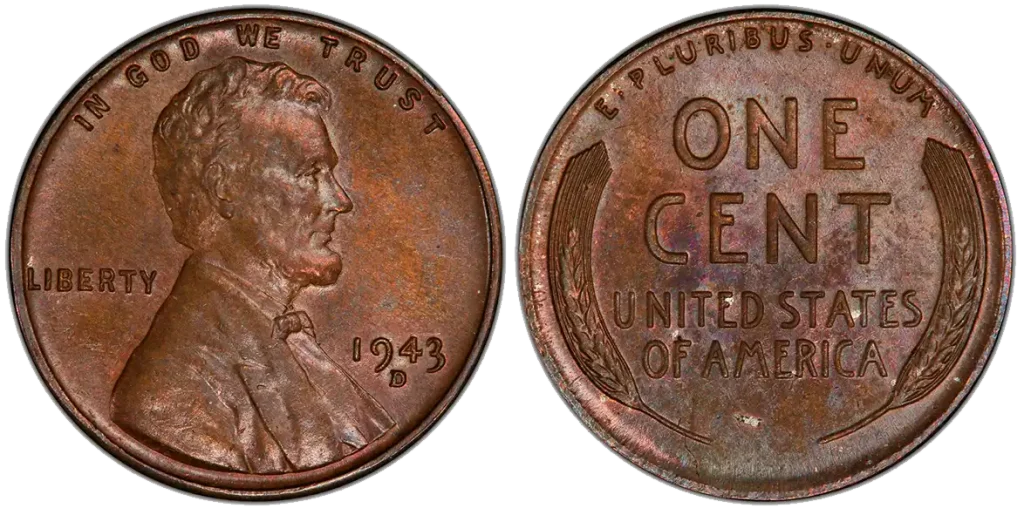
- Grade: PCGS MS64BN
- Auction: Legend Rare Coin Auctions, January 2010
You may have heard about a very rare 1943 bronze Lincoln Wheat penny is worth $2.3 million. Not so much, but also expensive is the 1st in our list.
In 1943, the U.S. Mint shifted cent production from bronze to zinc-coated steel to conserve copper for WWII. But in Denver, a single rare Lincoln Wheat penny 1943 planchet from the previous year somehow remained in the machinery. The result? A one-of-a-kind coin—the only confirmed 1943-D Lincoln cent struck on a bronze planchet.
This specimen features deep brown surfaces, even luster, and remarkably well-preserved detail for a coin that should not exist. Its uniqueness and eye appeal led to the 1943-D Lincoln bronze Wheat penny record-breaking sale of $1.7 million, making it the most expensive Lincoln cent ever sold and one of the rarest U.S. coins in existence.
2. 1943 Bronze Cent (Philadelphia) — $840,000
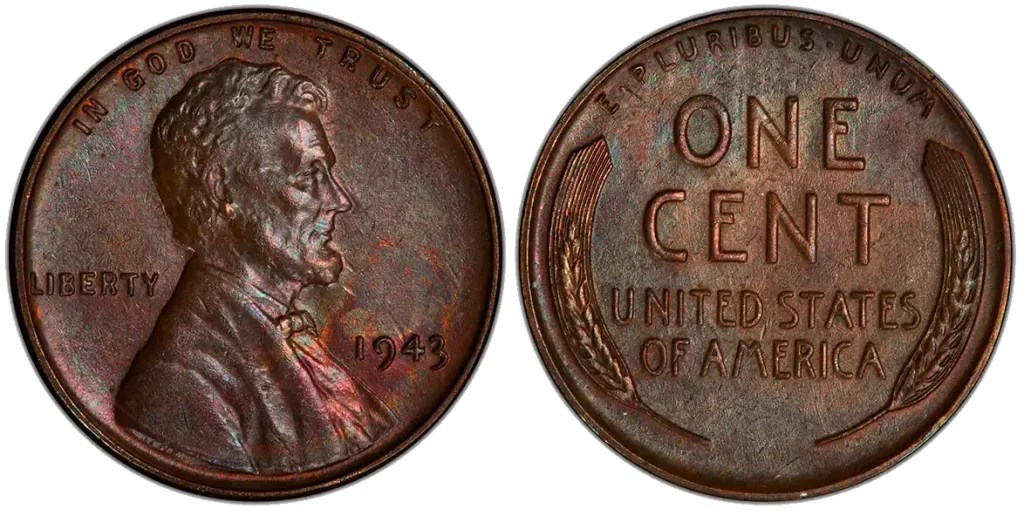
- Grade: PCGS MS63BN
- Auction: Stack’s Bowers Galleries, March 2021
Here’s another rare 1943 Lincoln Wheat penny. Philadelphia also mistakenly struck a few 1943 bronze cents. With the vast majority made of steel, these bronze strays are incredibly rare—only about 12 examples are known from the Philadelphia Mint. This coin, graded MS63BN, displays chocolate-brown surfaces with sharp details and only minor contact marks.
The mistake likely occurred at the start of a production run, when leftover bronze blanks from 1942 were not removed. Yes, it’s not a Lincoln Wheat penny value $4 million, but its error status and solid condition explain why this example fetched $840,000.
3. 1944-S Steel Cent — $408,000
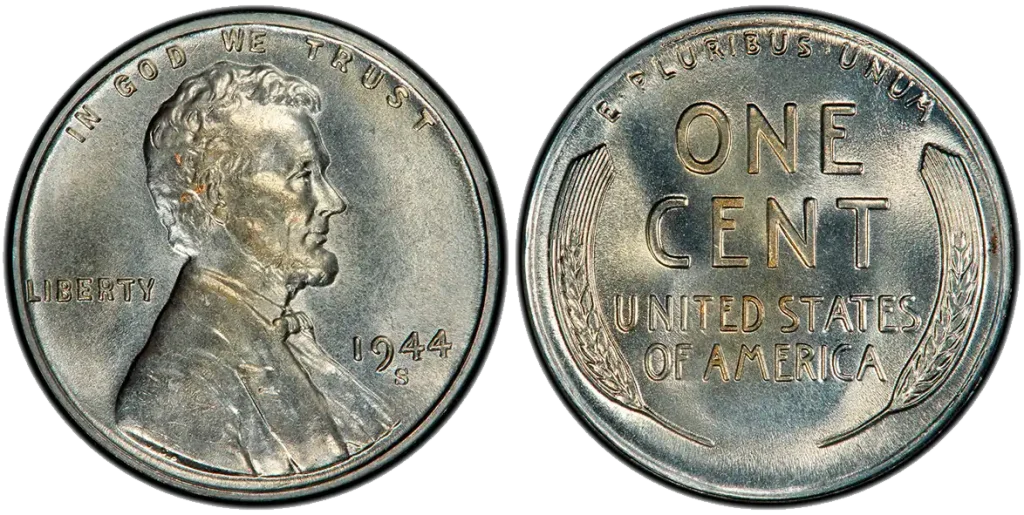
- Grade: PCGS MS66
- Auction: Heritage Auctions, August 2021
After reverting to copper in 1944, the U.S. Mint unintentionally used leftover steel blanks at the San Francisco facility. This 1944 Lincoln Wheat penny (S) is the finest graded example, earning PCGS MS66 and displaying icy, reflective surfaces with a faint blue-gray hue typical of WWII steel planchets.
Only two or three 1944-S steel cents are confirmed, making this coin ultra-rare by both date and composition. It sold for a staggering $408,000, setting a new benchmark for transitional errors and reinforcing the enduring appeal of wrong-planchet cents.
Some collectors even believe that such a coin can be a Lincoln Wheat penny $159 million value piece.
4. 1909-S VDB — $258,500

- Grade: PCGS MS67RD
- Auction: Stack’s Bowers, July 2014
You already know that a Lincoln Wheat penny, minted 1909-1958, rare variations can be worth millions. Here’s the next one.
The 1909-S VDB penny is the most iconic regular-issue Lincoln cent. With just 484,000 coins minted, it combines historical importance (first year of issue, first real person on U.S. coinage) with political controversy (removal of designer Victor D. Brenner’s initials due to public backlash).
This particular coin, graded MS67RD, is tied for the finest known. The surfaces blaze with original red luster, and the strike is razor-sharp, with every wheat stalk and detail on Lincoln’s profile fully defined. It brought $258,500 at auction, not a Lincoln Wheat penny $2.2 billion value,—but proof that even non-error Wheat Cents can command six figures if preserved perfectly.
1944 Steel Cent (Philadelphia) — $180,000
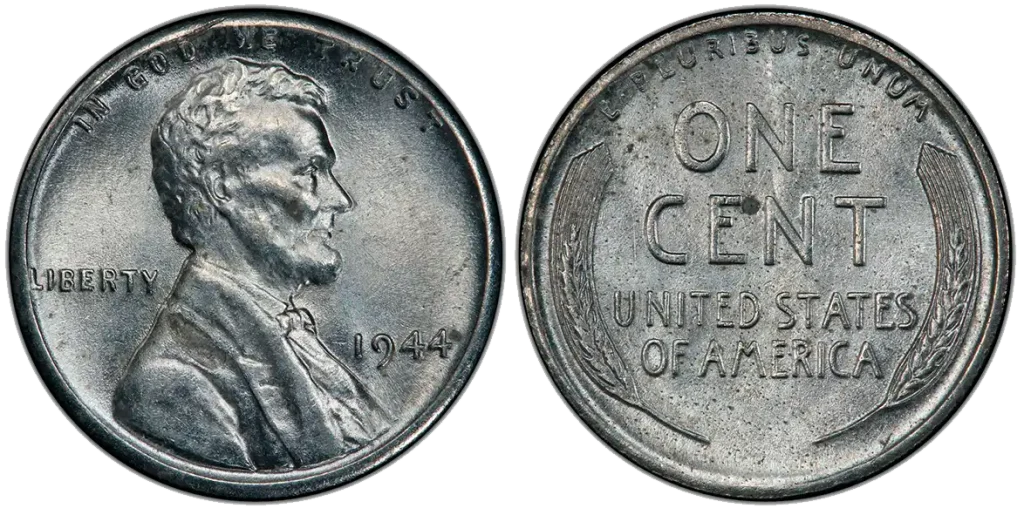
- Grade: NGC MS64
- Auction: Heritage Auctions, January 2021
While 1944 cents were supposed to return to bronze, a small number of leftover 1943 steel blanks were mistakenly used. The Philadelphia Mint produced the largest number of steel planchet errors in 1944, but they remain exceptionally rare, with fewer than 20 known.
This MS64 example features smooth steel-gray fields, minimal spotting, and a well-centered strike. It stands as a testament to the chaotic transition of wartime minting. Its $180,000 sale cements its place among the most valuable post-war cents ever discovered. Who knows, it may become a Lincoln Wheat penny $15 million worth specimen!
6. 1922 No D (Strong Reverse) — $74,750
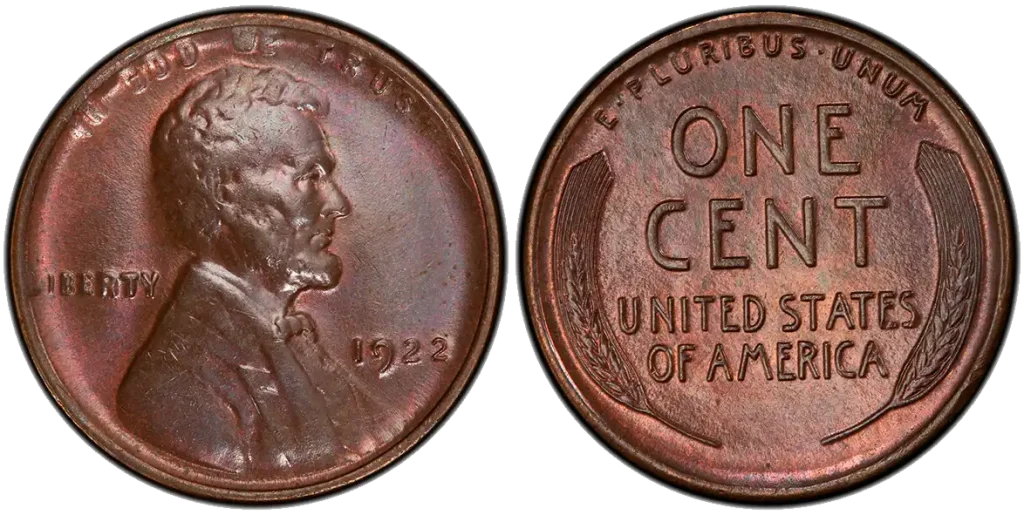
- Grade: PCGS MS64BN
- Auction: Heritage Auctions, February 2008
Here’s the next one from the Lincoln Wheat penny value chart. In 1922, all Lincoln cents were minted in Denver. However, one die pair—overused and poorly aligned—produced coins missing the “D” mint mark entirely. Only the variety with a strong reverse (Die Pair #2) is recognized as a collectible error.
This coin, MS64BN, is among the most iconic rare Lincoln Wheat penny examples of the variety. Its surfaces are smooth and evenly toned, with crisp detail on the wheat ears and Lincoln’s coat.
It sold for $74,750, marking the high-end value of one of the most popular die varieties in U.S. coinage.
7. 1955 Doubled Die Obverse — $50,300
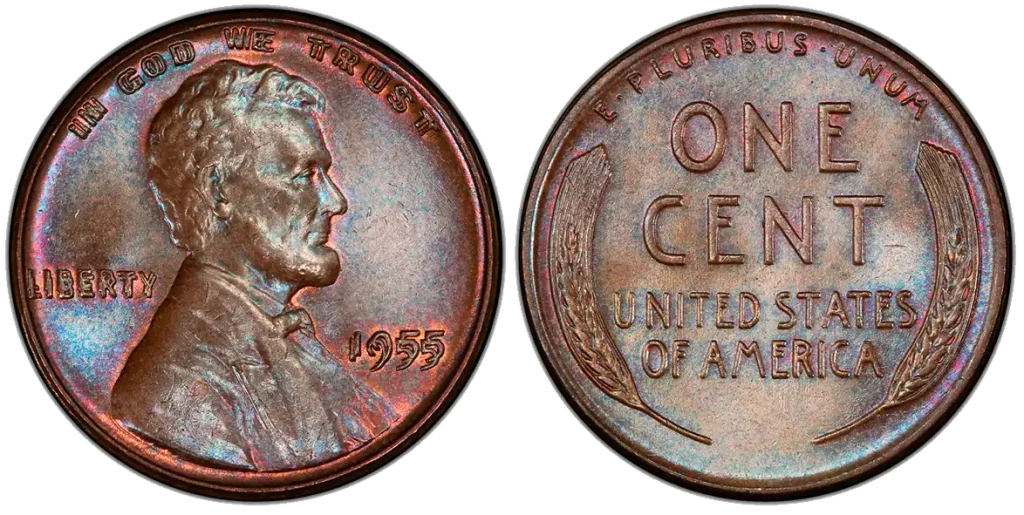
- Grade: PCGS MS65+RD
- Auction: Heritage Auctions, June 2018
Not a 30 million dollar Lincoln Wheat penny, but still valuable. No Lincoln cent is more famous than the 1955 Doubled Die Obverse. The doubling on “LIBERTY,” “IN GOD WE TRUST,” and the date is bold and unmistakable—easily visible to the naked eye.
This example, graded MS65+RD, is one of the finest red specimens known, with vivid copper luster and minimal contact. It sold for $50,300.
8. 1914-D — $29,375
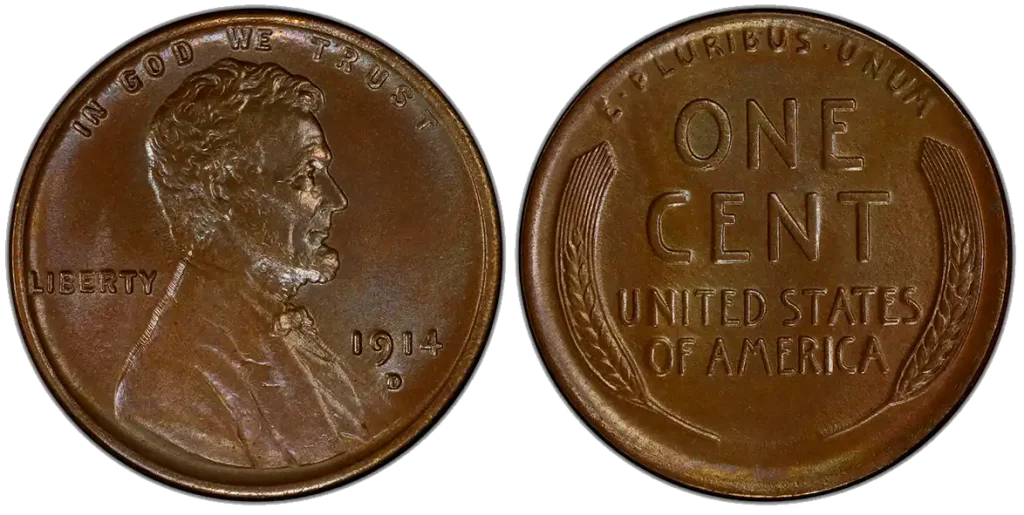
- Grade: PCGS MS66+RD
- Auction: Heritage Auctions, February 2018
The 1914-D is the key date of the early rare Lincoln Wheat pennies outside of the 1909-S VDB. With just over 1.1 million minted, most circulated heavily. This specimen, however, is graded MS66+RD—placing it among the finest known survivors.
The coin displays full, frosty red luster and flawless design detail. It represents the ultimate version of a coin many collectors have in worn grades. It brought $29,375, a significant jump over lower Mint State examples.
9. 1931-S — $18,600

- Grade: PCGS MS66RD
- Auction: Heritage Auctions, August 2004
Minted at the tail end of the Great Depression, the 1931-S had a mintage of only 866,000. Most were saved in rolls, but high-grade red coins are still scarce.
This MS66RD example boasts great luster, clean surfaces, and strong detail—qualities that elevated it to $18,600 at auction. For collectors completing a top-tier Lincoln registry set, it’s a required and highly competitive acquisition.
10. 1909-S (No VDB) — $16,100
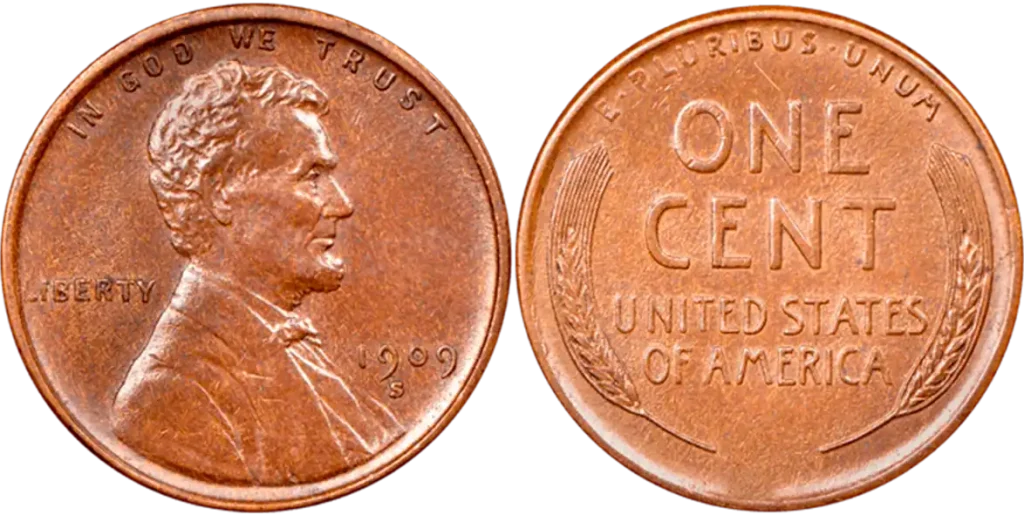
- Grade: PCGS MS67RD
- Auction: Heritage Auctions, January 2006
While often overshadowed by the VDB variant, the plain 1909-S is itself quite rare, with just 1.8 million coins struck. This MS67RD example is one of the highest-graded coins of this type, with glowing red luster and satiny surfaces.
The design is perfectly struck, and the coin’s flawless preservation earned it a strong $16,100 sale price. One day it may become a 4.3 million dollar Lincoln Wheat penny!
The 1943 Copper Phenomenon
A Wartime Coining Error
In 1943, the U.S. Mint switched cent production from bronze to zinc-coated steel to preserve copper for ammunition and military equipment during World War II. The change was announced, tested, and successfully implemented.
But something unexpected happened.
Approximately 40 bronze planchets—the leftover copper blanks from 1942—were accidentally fed into the presses at the Philadelphia, Denver, and San Francisco Mints. These bronze strays were stamped with 1943 dies and quietly released into circulation, i.e. Lincoln Wheat penny 1943 copper specimens.
How Rare Are They?
- Philadelphia Mint: ~15 confirmed
- Denver Mint: 1 known specimen (sold for $1.7 million)
- San Francisco Mint: ~6–7 confirmed
How to Spot a Real 1943 Copper Lincoln Wheat Penny
Because of their value, 1943 bronze cents are among the most frequently counterfeited coins in the world.
Here’s how to tell the real from the faked:
1. Use a Magnet
- Steel cents will stick.
- Genuine bronze cents will not.
If it’s magnetic—it’s fake or steel.
2. Weigh It Precisely
- Bronze cents should weigh approximately 3.11 grams.
- Steel cents weigh about 2.70 grams.
- Use a precision scale, preferably to the hundredth of a gram.
3. Examine the Color and Surface
- Real 1943 bronze cents have a smooth chocolate or reddish-brown tone.
- Steel cents that have been re-plated to look like copper often appear shiny, artificial, or too red.
4. Authenticate Professionally
- Genuine 1943 bronze cents should always be graded by PCGS or NGC.
- Lincoln Wheat penny valuation rare coin is a must.
Valuation Factors Explained: What Makes It Valuable
Not all Lincoln Wheat Pennies are created equal. Two coins with the same date can have different values—one might be worth a few cents, the other a few thousand dollars. Understanding the Lincoln Wheat penny valuation concerns drives collector demand and market price.
1. Condition: The Grading Scale from Poor to Perfect
A coin’s condition, also known as its grade, is one of the most significant factors in determining the Lincoln Wheat penny rare value. Grading assesses wear, luster, strike sharpness, and eye appeal.
Below is the standardized Sheldon Scale used by grading services like PCGS and NGC:
| Grade | Description | Visual Clues |
| P-1 | Poor | Barely identifiable; date may be faint or missing |
| G-4 | Good | Heavy wear; major details visible, but flat |
| VG-8 | Very Good | Basic features visible, but no fine detail |
| F-12 | Fine | Moderate wear; LIBERTY visible, but worn |
| VF-20 | Very Fine | All major elements sharp; slight wear on high points |
| EF-40 | Extremely Fine | Minor wear on highest points, good luster remains |
| AU-50 | About Uncirculated | Nearly full detail; slight wear on the high points |
| MS-60 | Mint State (Uncirculated) | No wear; average luster and strike, several marks |
| MS-65 | Choice Gem Mint State | Strong luster, sharp strike, minor flaws |
| MS-70 | Perfect Mint State | Flawless under 5x magnification (extremely rare and Lincoln Wheat penny valuable coin) |
Why It Matters:
- A 1914-D in G-4 might sell for $300, while in MS-65+RD, it could exceed $25,000.
- Collectors pay steep premiums for coins with original mint red color (RD), full luster, and clean surfaces.
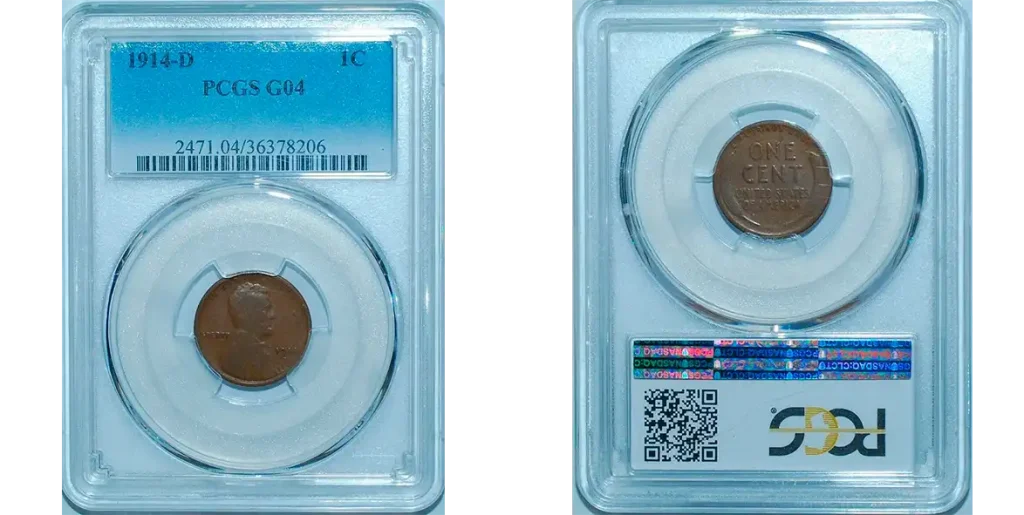

2. Mint Marks: Tiny Letters, Huge Impact
| Mint Location | Mint Mark | Common Abbreviation | Example |
| Philadelphia | (none) | — | 1944 |
| Denver | D | 1943-D | Lower mintages on some key dates |
| San Francisco | S | 1909-S, 1931-S | Known for early rarities and clean strikes |
Mint Mark Lincoln Wheat Penny Billion Dollar Valuation:
- 1909-S VDB – Only 484,000 made
- 1914-D – Scarce and highly sought after
- 1931-S – Just 866,000 minted during the Great Depression
3. Error Types: The Flawed Coins Worth a Fortune
Certain cents are Lincoln Wheat penny rare collectible valuable specimens not because they’re perfect—but because they’re not.
Most Valuable Errors and Varieties:
Doubled Die Obverse (DDO)
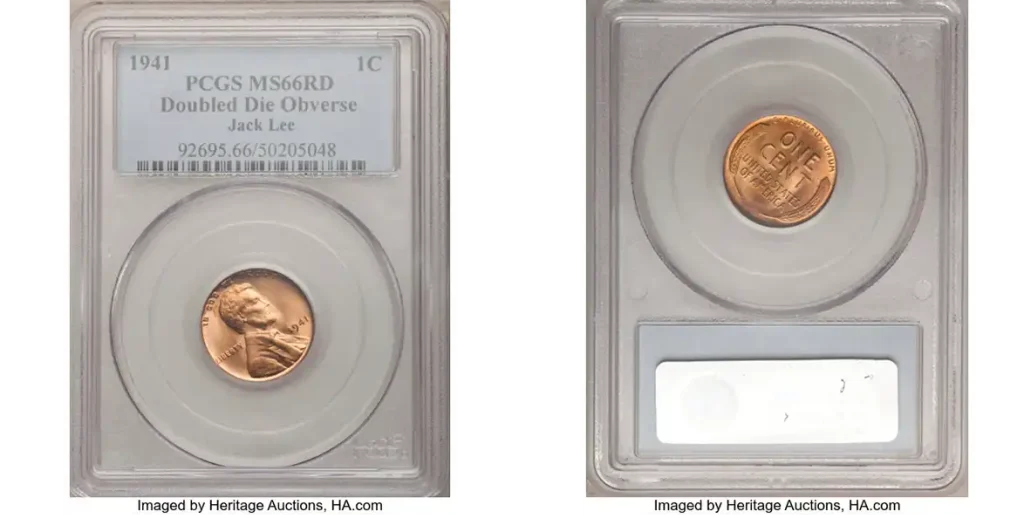
- Caused by die misalignment during hubbing.
- Famous Example: 1955 DDO – strong doubling of date and inscriptions
- Lincoln Wheat penny price value: $1,000 to $50,000+ depending on grade
Repunched Mint Marks (RPMs)

- A mint mark punched over another (e.g., D over S)
- Example: 1944-D/S RPM
- Lincoln Wheat penny value price: $30 to $2,000+, depending on clarity and condition
Off-Center Strikes

- Blanks misaligned during striking
- Coins 10–50% off-center with full date/mint mark can fetch $100–$2,000+
Wrong Planchet Errors
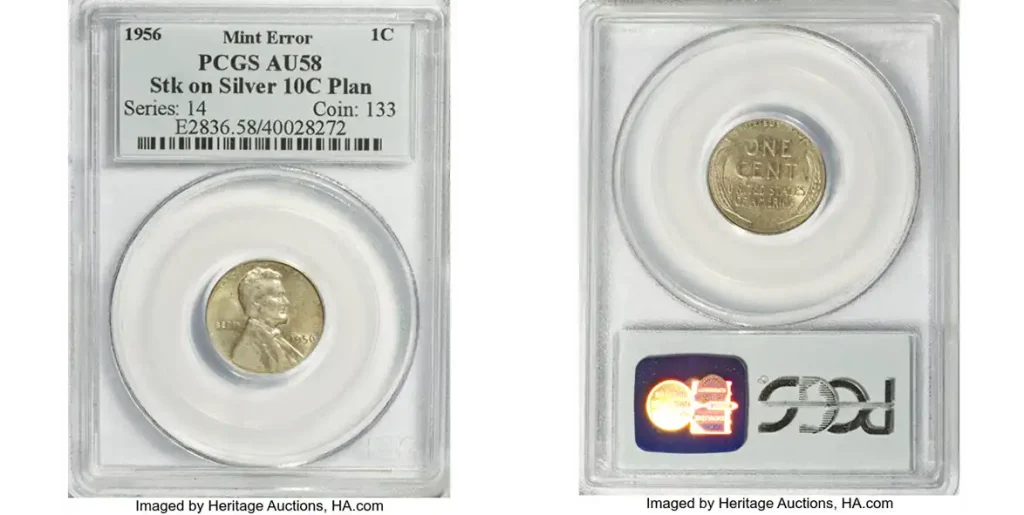
- A coin struck on a planchet meant for another denomination or metal
- Example: 1943 bronze cent, 1944 steel cent
- The Lincoln Wheat penny coin value: $100,000 to $2.3 million
Spotting Fakes: 4 Red Flags
As they climb in Lincoln Wheat penny value rare coin, so do forgeries. Here are four quick ways to spot a fake before it costs you.
1. Wrong Weight
- Real bronze cents (pre-1982): 3.11g
- 1943 steel cents: 2.70g
- If a “1943 copper” weighs 2.7g, it’s just steel with plating.
2. Fake Mint Marks or Toning
- Look for added mint marks (often misaligned or oddly shaped).
- Avoid coins with unnatural colors (bright red, neon blue, splotchy tones).
- Check for tool marks near the date.
3. Machine Doubling ≠ Doubled Die
- True doubled dies (like 1955) show bold, uniform doubling.
- Machine doubling looks flat or shelf-like—not a Lincoln Wheat penny rare valuable piece.
4. Unrealistic Prices
- A “1920-D Lincoln Wheat penny $110 million”? Fake listing.
- High-value coins should be graded by PCGS/NGC and priced within market norms.
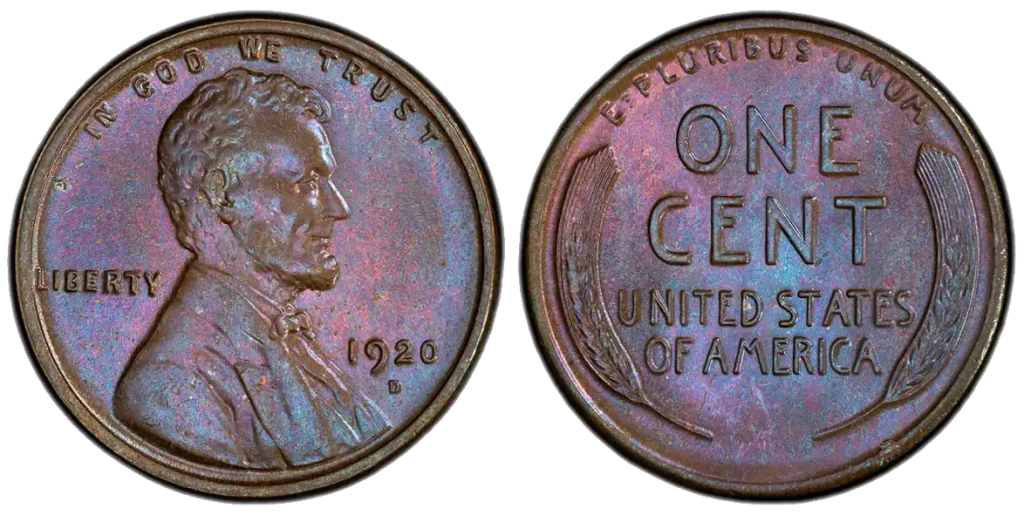
Where to Sell & Authenticate
Before selling a valuable Lincoln Wheat Penny, get it authenticated and choose the right platform.
Top Grading Services
- PCGS and NGC are the gold standard.
- Cost: $30–$150 depending on service level.
- Why grade? Boosts value, proves authenticity, and builds buyer trust.
Where to Sell
Auction Houses (for $1,000+ coins)
- Best for rare, graded, or error coins.
- Top names: Heritage, Stack’s Bowers, GreatCollections
- Pros: Maximum exposure, higher prices
- Cons: 10–20% fee, longer payout
Private Dealers/Coin Shops (for <$500 coins)
- Fast cash, in-person deals
- Good for bulk or mid-value pieces
- But: Lower offers and potential undervaluing
How to Identify It
Not sure if your coin is rare? Think about the Lincoln Wheat penny million dollar value? Coin ID Scanner makes it easy, as it:
- Instantly scans and identifies coins using your phone’s camera
- Gives estimate Lincoln Wheat penny values based on market data
- Lets you digitally manage your collection
FAQs
How Much is a Lincoln Wheat Penny Worth?
Most are worth 1–50¢, but key dates and errors can reach $1,000+ or even over $1 million.
What Factors Determine a Wheat Penny’s Value?
Date, mint mark, condition, metal composition, and mint errors are the biggest factors.
How Can I Identify a Potentially Valuable Wheat Penny?
Check for rare dates (1909-S VDB, 1914-D), errors (1955 DDO, 1943 bronze), and get it weighed.
What are the Most Valuable Lincoln Wheat Pennies Ever Found?
The 1943-D bronze cent ($1.7M) and 1944-S steel cent ($408K) top the list.
What Does “VDB” Stand For on the 1909 Penny?
The initials of designer Victor David Brenner, found on the reverse of early 1909 cents.
How Can I Tell if My 1943 Penny is the Valuable Copper Version?
Use a magnet (copper won’t stick) and weigh it—real copper = 3.11g, steel = 2.7g.
What Should I Do If I Believe I’ve Found an Extremely Valuable Penny?
Don’t clean it. Weigh it, test it, and get it graded by PCGS or NGC before selling.
Are the Rumors of Multi-Million Dollar Wheat Pennies Real?
Yes—but only rare errors like the 1943 bronze cent have sold for $1M+. Most are not, like the 1946 Lincoln Wheat penny.